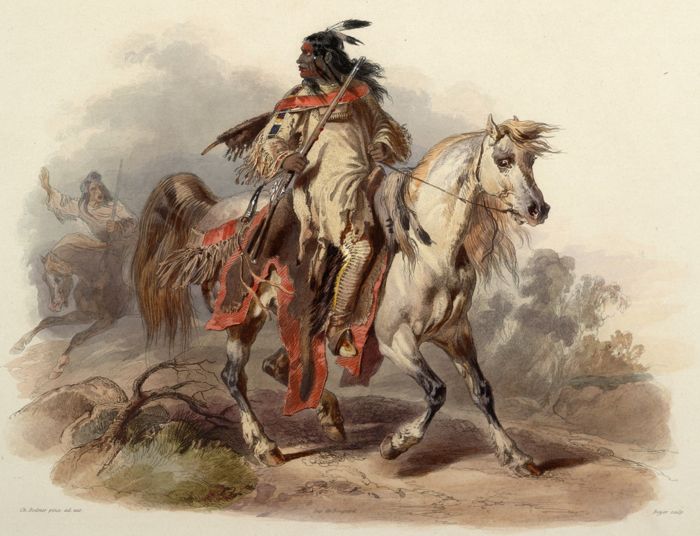by Sally Crum
I met Sally at a writer’s gathering in Colorado. She’s written a series of children’s books along with some adult books about the Native Americans who lived in the Western Colorado, Arizona, and New Mexico regions. These are educational, but fun—the perfect combination for any reader!
Having been a “cultural resource specialist” for federal agencies and the Navajo Nation for over 30 years, I have a great love for prehistory and history, and have found they both have a big influence in my life.
I wanted to share the excitement of the past with young people and with armchair archaeologists. Reports and lengthy tomes aren’t palatable to the general public, so I was determined to try to present history/prehistory in an accessible and stimulating manner.
From personal experience, I find reading unpretentious text or historical fiction is an enjoyable way to learn about earlier times. For example, authors such as Edward Rutherford and Patrick O’Brian seduce readers with “page-turning” stories based on impeccable research—and their readers effortlessly learn a lot while being entertained.
How Can a Descendant of “Intruders” Write Accurately About Native People?
While researching and writing my first book, People of the Red Earth, American Indians of Colorado, I became more immersed in the life-ways of those who lived here for thousands of years without adversely affecting the balance of nature (unlike what we non-natives have done in the last 150 years).
I became increasingly depressed with the devastation of their culture, language, and homelands. I thought it was not appropriate for a descendant of “intruders” (me) to be writing about native people.
Elementary school teachers (Colorado history is included in 4th grade curriculum) kept encouraging me to keep writing, though. They wanted one source that addressed Colorado cultures from Paleo Indian times to the present and also included information about the status of today’s native people.
Members of the tribes whose ancestors also lived in Colorado edited the book. I changed the text according to their suggestions. It helps me feel a bit better…
Preservation or Destruction for “Research?”—a True Conundrum
Obviously, the research and information gained personally from tribal informants added tremendously to my knowledge of native peoples.
It also made me increasingly aware of the reasons why many of them feel negative about excavating the sites of their ancestors.
Even if a cabin of a non-native homesteader has to be removed, they don’t understand how we can so dismissively dig up his trash piles, outhouse and other personal remains of his existence. These things should be left to deteriorate naturally, without our destruction of the site for the sake of “information.”
I tend to agree, although many of my peers would politely beg to differ—and a lot of their research has provided much information of interest to anthropologists and native people themselves—a true conundrum.
It Feels Good to Have Readers Request Sequels
Although I’m a terrible marketer of my books, they have been selling somewhat “steadily,” perhaps through word-of-mouth. I
It seems that those who read the books, especially teachers, find them very helpful and reader-friendly.
The children’s books on prehistoric trade intrigue young readers who claim they’ve learned a lot about the Ancestral Puebloan cultures. They want the story to continue and have requested sequels.
Advice for a Young Writer: Put Glue in the Seat of Your Pants
If I were to give a young writer advice about this sort of writing, I’d say love your history topic, research diligently, and put glue on the seat of your pants.
Have as many people as possible read your work, particularly those for whom the books are written and those who know more about the topic than you do.
Put the manuscript away for at least a week then go back and read it.
Join a writing group, and tell folks to be brutally honest in their critiques.
Be sensitive about whom you write and include their sides of the story. Qualify everything that is ambiguous or contentious in the field in which you write i.e. “Some think that…”; The other theory involves…”; “In contrast, Dr. Bold proposes…”; “A recent idea focuses on… ”
Good editors are critical. For my genre of books, contact the Tribal Councils and have them recommend tribal members to edit the segments you’ve written about their own Nations. Some will be happy to help you but others may find it difficult.
Don’t take it personally. Many tribes have websites from which you can acquire contact information.
I Hope Readers Share My Admiration of the Native Americans
I would like readers to appreciate and respect the skills, resourcefulness and integrity of the Native Americans who lived in this land sustainably for thousands of years.
We have much to learn from their history.
* * *
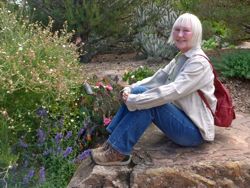 Sally Crum recently retired from her job as an archaeologist with the USFS in Colorado. Since 1996 she has written books (on the side), mostly about Native Americans—non-fiction for adults and historical fiction for children.
Sally Crum recently retired from her job as an archaeologist with the USFS in Colorado. Since 1996 she has written books (on the side), mostly about Native Americans—non-fiction for adults and historical fiction for children.
Her books include People of the Red Earth, American Indians of Colorado; Race to the Moonrise, An Ancient Journey; Race to the River, The Ancient Journey Continues (the last two about ancient trade in the Southwest); and The Night the Stars Fell, the story of the Leonid Meteor Shower of 1833.
Her books are summarized and can be obtained through her website. You can also connect with her on Twitter.
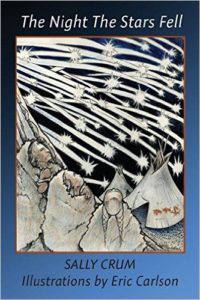 The Night the Stars Fell: Thousands of meteors blazed through the night and into the morning of November 12, 1833, astounding the entire world.
The Night the Stars Fell: Thousands of meteors blazed through the night and into the morning of November 12, 1833, astounding the entire world.
What caused this spectacular light show? It was the Leonid meteor shower.
In Sally’s latest book, lively poems and illustrations—and a bit of culture and astronomy—entice readers to experience one of the most spectacular sights of human history.
A discussion guide rounds out this delightful children’s book.
Available on Smashwords and Amazon.
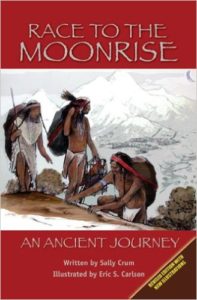 Race to the Moonrise: The delightful story of two engaging children living in northern Mexico around 1200 A.D.
Race to the Moonrise: The delightful story of two engaging children living in northern Mexico around 1200 A.D.
Little Basket is a young girl with special powers and Long Legs is her brother, who is training to be a long-distance trader. They must travel on a long and dangerous journey from their home all the way to the home of the people of the Far North (in an area now known as Chimney Rock, in present-day southwestern Colorado).
While following the adventures of these two amazing children, we also learn about many of the early civilizations and cultures.
Race to the Moonrise was awarded the Gold Medal for Children’s Fiction from Colorado Independent Publishers, Inc.
Available at Amazon and Barnes & Noble.
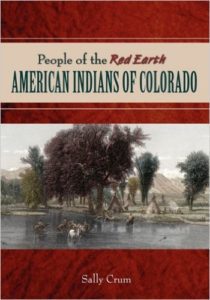 People of the Red Earth: Provides a lively cultural tour of Ice Age mammoth hunters to later hunter-gatherers and part-time farmers. More recent tribes are also discussed, including the Ute, Shoshone, Apache, Navajo, Comanche, Arapaho, and Cheyenne.
People of the Red Earth: Provides a lively cultural tour of Ice Age mammoth hunters to later hunter-gatherers and part-time farmers. More recent tribes are also discussed, including the Ute, Shoshone, Apache, Navajo, Comanche, Arapaho, and Cheyenne.
A new section in the book provides summaries of significant archaeological discoveries made since the original publication. Also included in this section is updated news about Colorado’s Native peoples, ancestral and present.
Susan Collins, State Archaeologist of Colorado, says, “The informative text and illustrations make this book a treasure to be used and shared.”
Rock art specialist Sally Cole, author of Legacy on Stone: Rock Art of the Colorado Plateau and Four Corners Region, states that “Readers have the opportunity to see American Indian history as dynamic, complex and, most significantly, as part of present-day society.”
Available at Amazon and Barnes & Noble.

